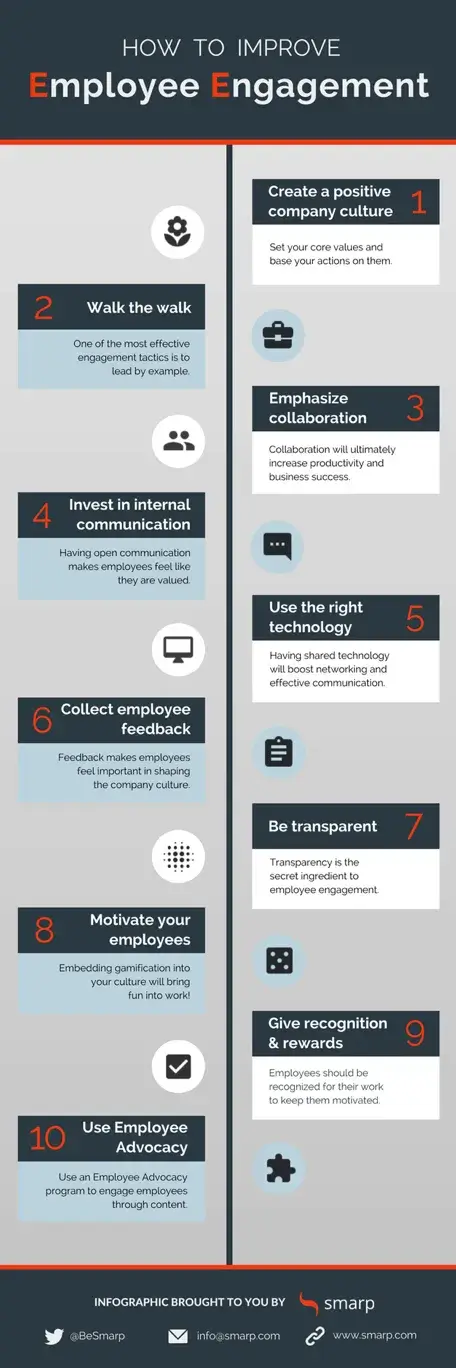Even though internal communications should be one of every organization’s top priorities, 60 percent of businesses don’t have any long-term internal communications strategy.
Internal communications affect the company’s employer brand, employees’ motivation, the corporate culture, and also employee engagement overall.
💡Feel free to download our free eBook “Building a Better Company with Internal Communications” where we share best practices for improving your internal communication strategy.
Deloitte’s 2017 Global Human Capital Trends Survey shows that only 23% of companies believe that their employees are fully aligned with the corporate purpose.
As workplaces are changing and the workforce is becoming more mobile, delivering effective internal communications can be a real challenge.
Tom Haak, founder and director of the HR Trend Institute, shares his thoughts on the most common internal communication challenges businesses are facing. He also shares his best practices for improving employee engagement in the workplace:
Hi Tom, you are the founder and director of the HR Trend Institute, what’s your story, how did you decide to launch this institute?
I have a background in international HR. I worked for great organizations, such as Philips Electronics, KPMG, Aon and Arcadis. I always tried to practice HR in an innovative and non-traditional way, but in the end, as an international HR executive, you spend most of your time in meeting rooms somewhere in a nice location.
I was more interested in HR innovation, and therefore I founded the HR Trend Institute. We’re going to celebrate our fifth anniversary in April. We are trend watchers and our main focus is people and organizations.
With our findings, we try to inspire HR professionals and others, showing that by using current trends and the possibilities of HR tech, life in the workplace can be a lot more fun, rewarding and effective. We do this by blogging, conduction keynotes, and hosting workshops, masterclasses and training programs.
Internal Communications Challenges
According to you, what are the main internal communications challenges that companies are facing now?
To me, there is not a big distinction between internal and external communications. As organizations are changing, it becomes more and more difficult to identify what “internal” is. Many people involved in the company’s success such as free agents, partners, suppliers or interns may not get the information they expect the company to share with them.
“Traditional internal communication is very much top-down and controlled. This is no longer the right approach.”
People want to be involved and informed. The carefully drafted messages from the top are necessary, but only for a small part of the organization.
Often the interview with the CEO in the newspaper is as informative as the interview in the internal newsletter. People want to hear from colleagues. More and more transparency is required (and is unavoidable).
Internal communication is often too much “one-size-fits-all”. Looking to control and standardize communications is an illusion.
Related: 5 ways Internal Communication Makes a Digital Workplace More Productive
People with the same values, and with the company’s purpose and their personal goals in mind, will still communicate in different ways, but hopefully with a common “ground tone”. Diversity makes a company colorful and real.
Internal communication tends to be one-way only (top-down). This is a big barrier that prevents from creating real internal communications.
Having an effective internal communication in place is the key to improving employee engagement. A better focus on listening and continuous listening is required. Employees’ thoughts and suggestions matter and listening to them can be beneficial to the organization in many different ways.
Lastly: the communication between employees and their direct supervisors is the most important one. Supervisors’ ability to communicate effectively with their teams is the key to world-class internal communications.
Internal Communications and Employee Engagement
Can you explain how internal communications can drive employee engagement?
There are several key drivers of employee engagement. In a nutshell, employees must feel valued and involved. People want to be involved in decision-making process.
Read Also: The importance of Knowing your Employees
Your employees must feel secure about sharing their ideas and they also should feel valued for their contribution to the success of the company.
“People want to learn and grow, and they also want to work in an organization where their health and well-being are top priorities.”
Good internal communications can contribute a lot to improve these key drivers of employee engagement. Again, it is clear that the focus should be on listening to the employees and having meaningful discussions with them, not on spreading the corporate messages in a “good news show”.
Related: The infographic bellow shows the role of internal communications in employee engagement:

Internal Communications and Continuous Listening
You mentioned earlier that businesses that really care about their employees are more focused on “continuous listening”. Can you tell us a bit more about this approach?
There is not a lot of ‘listening’ in organizations. Many companies have their annual employee surveys, with a long questionnaire.
Processing these surveys often takes a long time, but more importantly, employees wonder whether their responses will result in any changes.

HR technology makes it easier to create an architecture for continuous listening, where the different data sources can be combined. There are also new ways of collecting and gathering data so people do not have to answer questionnaires.
By combining the data of annual surveys, pulse surveys, email text analysis, performance reviews, exit interviews, the company social networks etc., you are able to find out what is going on at your workplace.
Related: 3 Reasons Why Employee Experience Should Be Your Number One Priority
Of course, it is not only about listening: continuous listening only makes sense if you are willing and able to act on what you hear.
Making Your Internal Communications Engaging
Can you tell us why visual content should be part of any company’s internal communications strategy?
Even though visual content trends have been going on for a long time, not all businesses use them to improve their internal communications. One-size-fits all does not work here either.
“It is all about multimedia communications, enabling people to choose the format that fits best with their personal preferences.”
Many people like short videos, not many people like a text-only email sent by the CEO to all employees. Videos, pictures or infographics are generally a lot more fun and effective than a long (and boring) text.
Related: Sara McGuire on Why Visual Storytelling Drives Higher Engagement
Also, speed of communication is very important when it comes to employee engagement.
I wonder why so many companies are still spending money on their printed magazines that are published twice a year. Yes, the layout of these magazines if often great, but most of the content is old and/or irrelevant.
Internal Communications and Employee-Generated Content (EGC)
Do you think that companies should encourage their employees to create more often relevant materials that they would share with their colleagues?
Peer-to-peer communication is becoming more important. People can learn a lot from each other.
You talk about “relevant materials”, and the word relevant is important: if you create communities where people gather around certain topics or projects, it becomes easier to share relevant content.

Technology can help people to find information when it is relevant to them.
Related: What Is Employee Generated Content (EGC) and How Does It Support Social Advocacy?
Sharing information for the sake of sharing information is not the right approach. There should be clear goals such as creating new business opportunities, increasing productivity, and let’s not forget another key goal: having fun at work!
Internal Communications Trends
How do you see internal communications evolving in the next few years?
I’d like to refer to my article 5 internal communication trends for 2019. My expectation is that internal and external communications will continue to merge. The focus will be more on listening than spreading information.
Peer-to-peer communication will be more important than top-down communication. People are looking for real stories, not carefully crafted corporate messages. Personalized communications will become one of the key trends.
Related: 5 Employee Communication Predictions for 2020 (And Beyond)
Also, communication analytics will grow and enable us to design communication strategies in a more effective way based on data.
About Tom Haak: Tom has extensive experiences in HR Management: from 2006-2014, he was the global HR Director at Arcadis and before joining this company, he occupied senior HR positions at global organizations, including Aon, KPMG and Philips Electronics. Tom has a keen interest in innovative HR and how organizations can benefit from trend shifts. He has founded the HR Trend Institute to help HR professionals keeping up with HR and Talent Management trends.
© Picture copyrights: EerlijkeFlex.nl









